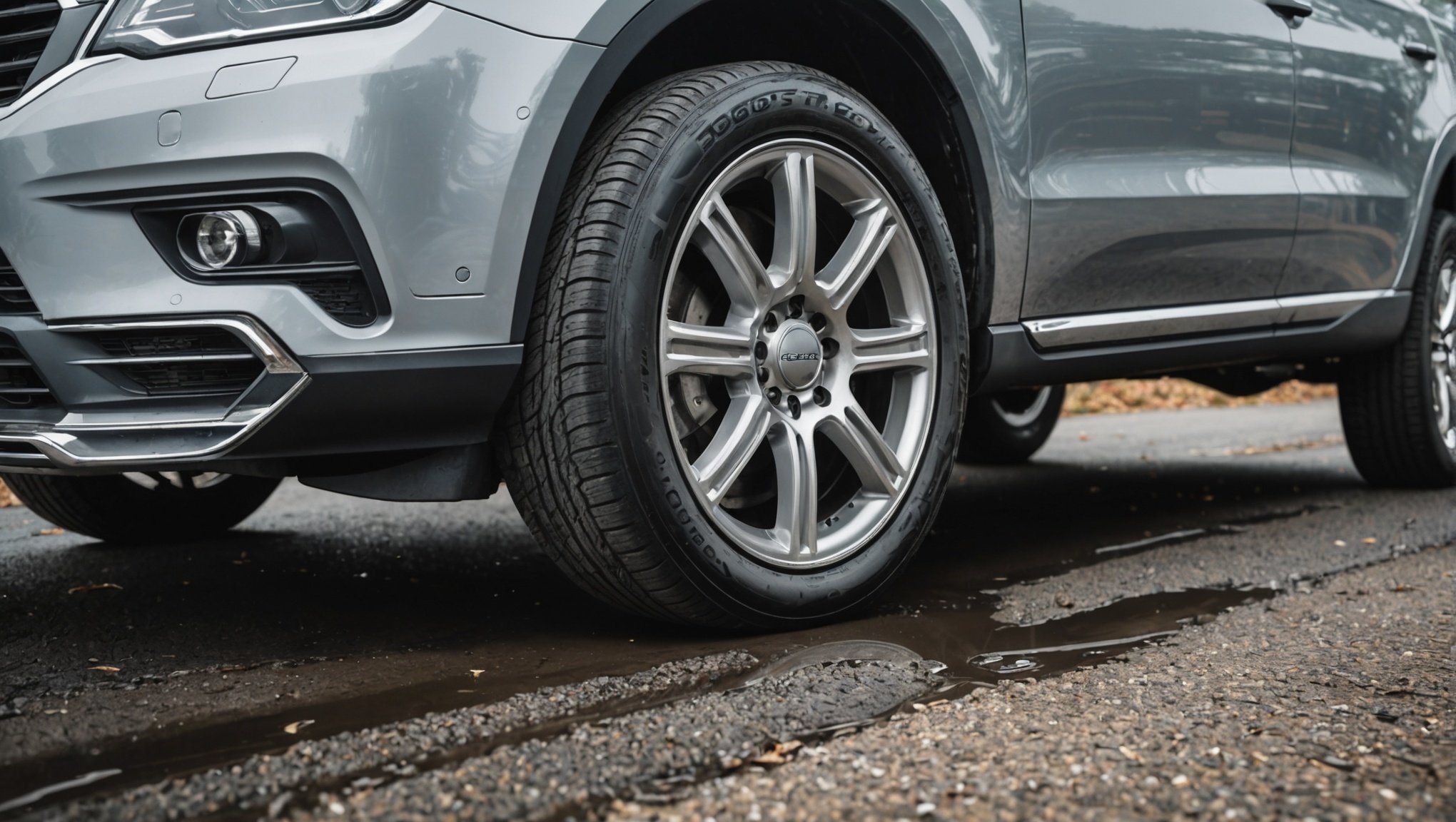Your vehicle’s safety extends beyond basic maintenance. Often overlooked, undercarriage cleaning plays a vital role in enhancing performance and longevity. Dirt, grime, and road salt can accumulate over time, leading to corrosion and mechanical issues. By prioritizing this essential cleaning, you not only protect vital components but also improve overall safety on the road. Discover how a clean undercarriage can make a significant difference in your driving experience and vehicle reliability.
Importance of Undercarriage Cleaning
The undercarriage of a vehicle plays a crucial role in its overall performance and safety. It consists of components such as the frame, exhaust system, suspension, and fuel lines. These elements are essential for ensuring vehicle safety and optimal functionality. Regular undercarriage cleaning is vital to keep these components in good condition.
Also read : Maximizing Engine Efficiency: Perfecting Your Coolant Mixture for Frosty UK Weather
Neglecting to clean the undercarriage can lead to significant safety hazards. Accumulated dirt, mud, and road salt can cause corrosion and rust, which may weaken the vehicle's structural integrity. Rust prevention is a key aspect of maintaining vehicle safety, as rust can compromise critical parts like brake lines and suspension components, leading to potential failures.
Moreover, a clean undercarriage contributes to maintaining the vehicle's value. A well-maintained vehicle is more appealing to potential buyers and can command a higher resale price. Undercarriage cleanliness is often seen as a reflection of the overall care given to the vehicle, making it an important factor for both current performance and future valuation.
This might interest you : Ensuring Child Safety: A Guide to Checking Your Vehicle”s Compatibility with Car Seats
In conclusion, regular undercarriage cleaning is not just a cosmetic concern; it is a proactive measure to ensure vehicle safety, prevent rust, and maintain the vehicle's value over time. Prioritising this aspect of vehicle maintenance can lead to long-term benefits and peace of mind for vehicle owners.
Risks of Neglecting Undercarriage Maintenance
Ignoring the undercarriage maintenance of a vehicle can lead to serious repercussions. One of the most significant risks is vehicle corrosion. When rust and corrosion take hold of critical components such as the frame and suspension, it can compromise the structural integrity of the vehicle. This can result in dangerous situations, especially if vital parts like brake lines are affected.
Consequences of Rust and Corrosion
The presence of rust can lead to the weakening of essential parts, making them prone to failure. For example, corroded suspension components may lead to a loss of vehicle control, increasing the risk of accidents. Additionally, rust can spread quickly if not addressed, further exacerbating the problem.
Impact of Accumulated Debris
Debris accumulation is another concern. Mud, road salt, and other materials can build up on the undercarriage, affecting vehicle performance. This buildup can lead to overheating of components like the exhaust system and impact fuel efficiency. Moreover, debris can obstruct proper functioning, leading to costly repairs.
Case Studies
There are numerous examples where neglecting undercarriage maintenance has led to failures. Vehicles with unchecked rust have experienced brake failures, while others with excessive debris accumulation have suffered from reduced performance. These cases highlight the importance of regular maintenance to prevent such issues.
Effective Undercarriage Cleaning Methods
Maintaining a clean undercarriage is essential for vehicle longevity and safety. There are various cleaning techniques available, each with its advantages.
DIY Cleaning vs. Professional Services
When it comes to undercarriage cleaning, vehicle owners can choose between DIY methods and professional services. DIY cleaning offers cost savings and allows for regular maintenance. It typically involves using pressure washing to remove dirt and debris. However, professional services provide a more thorough clean, reaching areas that might be missed in a DIY approach. Professionals are equipped with specialized tools and expertise, ensuring comprehensive care.
Recommended Cleaning Products and Tools
For those opting for DIY, investing in quality cleaning products is crucial. A high-pressure washer is effective for removing stubborn grime. Additionally, using a degreaser can help in breaking down oil and grease buildup. It's important to select products that are safe for vehicle components to prevent damage.
Step-by-Step Guide to Effective Undercarriage Cleaning
- Preparation: Park the vehicle on a flat surface and ensure it's cool.
- Pressure Washing: Use a high-pressure washer to remove loose dirt and debris.
- Degreasing: Apply a degreaser to oily areas and let it sit for a few minutes.
- Rinse: Thoroughly rinse the undercarriage to remove all cleaning agents.
- Inspection: Check for any signs of rust or damage post-cleaning.
Choosing the right method and tools ensures the undercarriage remains in optimal condition.
Recommended Frequency for Undercarriage Cleaning
Determining the ideal cleaning frequency for your vehicle's undercarriage depends on several factors, including climate, road conditions, and vehicle usage. In regions with harsh winters, where road salt is prevalent, more frequent cleaning is advised to prevent corrosion. Similarly, vehicles regularly driven on dirt roads or in muddy conditions should undergo seasonal maintenance to remove accumulated debris.
Guidelines Based on Climate and Road Conditions
- Winter climates: Clean the undercarriage at least once a month.
- Dusty or muddy environments: Increase cleaning frequency to every two weeks.
- Urban areas: A bi-monthly schedule is typically sufficient.
Recommendations for Different Vehicle Types
Different vehicles have varying needs. Off-road vehicles require more frequent cleaning due to exposure to rough terrains. Commercial vehicles, which often carry heavy loads, benefit from regular inspections to ensure structural integrity. Conversely, sedans used primarily for city driving may require less frequent attention.
Importance of Regular Inspections
Regular inspections complement cleaning frequency. They help identify potential issues such as rust or damage before they escalate. Incorporating both cleaning and inspections into your seasonal maintenance routine ensures your vehicle remains in optimal condition, enhancing safety and longevity.
Connection Between Undercarriage Maintenance and Overall Vehicle Safety
Understanding the impact of undercarriage maintenance on vehicle safety is crucial for every vehicle owner. The condition of the undercarriage directly influences braking and handling. When components like the suspension and frame are compromised, the vehicle's ability to stop effectively and manoeuvre safely can be significantly reduced. This can lead to hazardous situations, especially in emergency braking scenarios.
Moreover, the undercarriage plays a pivotal role in tire wear. Misalignments or damage to the suspension can cause uneven tire wear, which affects traction and increases the risk of blowouts. Regular inspection and maintenance of the undercarriage ensure that these issues are identified and rectified promptly, preserving tire longevity and enhancing safety.
Expert insights highlight the importance of a comprehensive maintenance approach. Professionals emphasize that maintaining the undercarriage is as critical as engine or brake maintenance. They recommend regular checks and cleaning to prevent corrosion and ensure all components function optimally. By prioritising undercarriage care, vehicle owners can ensure a safer driving experience and extend the life of their vehicles.
Expert Tips for Maintaining a Clean Undercarriage
Maintaining your vehicle's undercarriage is crucial for longevity and performance. Here are some expert maintenance tips to keep it in top shape.
Seasonal Tips for Undercarriage Upkeep
Seasonal changes can significantly impact your vehicle. In winter, road salt can cause corrosion, so frequent cleaning is essential. Summer brings dust and debris, making regular rinsing important. Implementing a seasonal vehicle care routine helps mitigate these effects.
Importance of Addressing Issues Promptly
Promptly addressing any signs of wear or damage is vital. Rust or corrosion can escalate quickly, leading to costly repairs. Regular inspections allow you to identify and rectify issues early, ensuring your vehicle remains safe and reliable.
Tools and Resources for Ongoing Maintenance
Investing in the right tools can make undercarriage maintenance more manageable. A high-pressure washer is effective for removing stubborn debris, while a quality degreaser can tackle oil and grease. Consider consulting with professionals for expert advice on products and techniques that best suit your vehicle's needs.
By following these expert tips, you can maintain a clean and well-functioning undercarriage, enhancing your vehicle's safety and performance.
Before-and-After Case Studies
Exploring real-life examples of undercarriage maintenance can highlight its significant benefits. These case studies reveal the transformative impact of regular cleaning on vehicle performance and longevity.
Real-Life Examples Showcasing Benefits
One notable case involved a family SUV frequently driven in harsh winter conditions. The vehicle owner reported significant undercarriage corrosion before implementing a regular cleaning routine. Post-maintenance, the SUV exhibited improved structural integrity and reduced rust, enhancing overall safety and performance.
Testimonials from Vehicle Owners
Vehicle owners often share positive feedback regarding maintenance results. A commercial truck driver noted a noticeable increase in fuel efficiency and smoother handling after consistent undercarriage cleaning. These testimonials underscore the importance of maintaining a clean undercarriage for optimal vehicle function.
Analysis of Performance Improvements Post-Cleaning
Performance improvements are evident in several areas. Vehicles often experience enhanced braking efficiency and better handling post-cleaning. Additionally, the removal of debris and rust contributes to a longer lifespan for critical components. These improvements not only enhance safety but also provide financial savings by reducing the likelihood of costly repairs.
Incorporating these insights into regular vehicle care routines can lead to significant long-term benefits, as demonstrated by these compelling before-and-after transformations.
Cost Considerations for Undercarriage Cleaning
Understanding the cleaning costs associated with undercarriage maintenance is crucial for vehicle owners looking to balance budget maintenance and vehicle care. The expenses can vary significantly between DIY methods and professional services.
For those opting for a DIY approach, the initial investment includes purchasing a high-pressure washer and quality cleaning products. This typically ranges from £150 to £300. While the upfront cost might seem steep, regular DIY cleaning can lead to substantial long-term savings.
In contrast, professional services often charge between £50 and £100 per session. Although this ensures a thorough clean, frequent visits can add up over time.
A comprehensive cost-benefit analysis reveals that investing in regular undercarriage cleaning can prevent costly repairs caused by rust and corrosion. Maintaining the undercarriage not only protects the vehicle's structural integrity but also enhances its resale value.
Long-term savings become evident when considering the prevention of issues such as brake line failures or suspension damage. By prioritising budget maintenance and assessing the value of regular cleaning, vehicle owners can make informed decisions that ensure both safety and financial efficiency.
Environmental Impact of Undercarriage Cleaning
When considering undercarriage cleaning, it's essential to weigh environmental considerations alongside vehicle maintenance. The use of eco-friendly products plays a pivotal role in reducing the ecological footprint of this process. These products are designed to be biodegradable and non-toxic, ensuring they do not harm the environment while effectively cleaning the vehicle.
Proper waste disposal is another critical aspect. During the cleaning process, contaminants such as oil, grease, and road salt are washed away. If not managed correctly, these substances can pollute local waterways and soil. It's important to collect and dispose of wastewater responsibly, adhering to local regulations to minimise environmental impact.
Balancing vehicle maintenance with environmental responsibility requires a conscientious approach. By choosing sustainable cleaning solutions and implementing responsible waste management practices, vehicle owners can maintain their vehicles without compromising the environment. This balance not only supports ecological well-being but also aligns with growing consumer demand for environmentally conscious practices.
Adopting these measures ensures that undercarriage maintenance contributes positively to both vehicle longevity and environmental health, demonstrating that effective vehicle care and ecological responsibility can coexist.
Conclusion: The Long-term Benefits of Undercarriage Cleaning
Incorporating regular undercarriage cleaning into vehicle maintenance routines offers significant long-term benefits. Ensuring a clean undercarriage not only enhances vehicle longevity but also provides crucial safety assurance. By preventing rust and corrosion, vehicle owners can maintain the structural integrity of essential components like the suspension and brake lines.
Safety assurance is paramount, as a well-maintained undercarriage directly impacts a vehicle's handling and braking efficiency. Addressing potential issues early through regular cleaning and inspections can prevent dangerous situations, such as brake failures or loss of control due to compromised suspension parts.
Integrating undercarriage cleaning into your vehicle care routine is a proactive step towards preserving vehicle longevity. By prioritising this often-overlooked aspect of maintenance, owners can safeguard their investment, ensuring the vehicle remains reliable and performs optimally over time.
Moreover, maintaining a clean undercarriage contributes to a higher resale value, reflecting the overall care given to the vehicle. Encouragement to adopt these practices stems from the clear advantages they offer in terms of safety and performance. By embracing regular undercarriage maintenance, vehicle owners can enjoy the peace of mind that comes with a well-cared-for vehicle.






